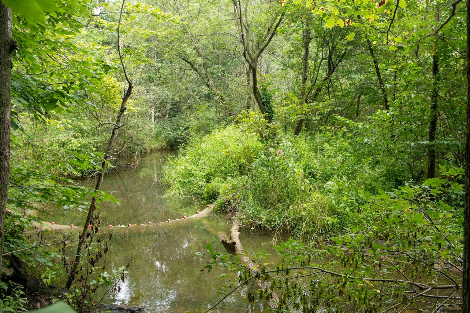Sustainable global food security requires that all forms of food production, including natural resource harvesting, does not simultaneously alter the biodiversity, structure and the ecosystem services, such as carbon storage, we rely on.
Sustainable global food security requires that all forms of food production, including natural resource harvesting, does not simultaneously alter the biodiversity, structure and the ecosystem services, such as carbon storage, we rely on.

Developing sustainable food production in the face of climate change is one of the most important challenges of our time. Sustainable global food security requires that all forms of food production, including natural resource harvesting, does not simultaneously alter the biodiversity, structure and the ecosystem services (e.g., carbon storage) we rely on. The team of broadly trained biologists are collectively seeking to address how food security can be maximized without altering aquatic biodiversity and ecosystem services. Aquatic ecosystems are critical to understanding sustainability as they have two major issues for the sustainability of food production:
To understand the across-scale (DNA to whole ecosystems; local to global) responses of aquatic biodiversity and ecosystems function (e.g. stability, productivity, carbon storage, oxygen) to a range of food production activities to help find food productions techniques that are productive and do not negatively impact the critical structure and functioning of adjacent aquatic ecosystems.
This project follows the fate of nutrients and contaminants from the field to streams, lakes and oceans across a gradient in farming intensity. The impacts across the ecological hierarchy will be monitored, producing an integrated across-scale perspective on impacts of agriculture on biological structure and function. Using models, the team is connecting these results to highlight food production solutions that optimize food production and minimize biodiversity impacts and the nutrient sustainability issue. The project is in collaboration with researchers locally, regionally and globally to address the sustainability of natural resource harvesting. Historical data and modelling is used to explore whole ecosystem approaches (as opposed to more species-specific historical approaches) to harvesting fish sustainability. This research involves socio-ecological and economic models with the goal of aiding the development of whole ecosystem approaches to harvesting that can provide much needed solutions to the harvesting sustainability issue.
This project is a continuation of previously funded aquatic and ecosystem services work. The team has made significant progress in developing a local-regional baseline understanding for aquatic ecosystems. This baseline allows for comparison against how agriculture and land modification may impact aquatic ecosystem structure and function. The project also directly assessed the impact of agriculture on the Lake Erie watershed. Finally, global databases and regional to global papers on food security have been completed.
For more information on this research project, please visit:
https://www.wisdomofthemoose.com/
Bernier Lab Home